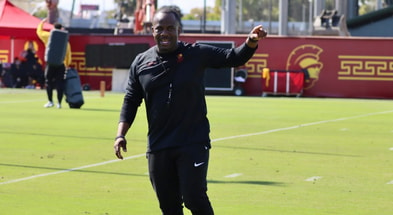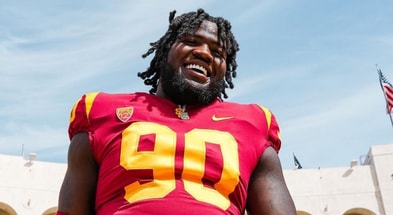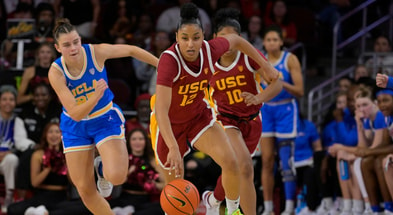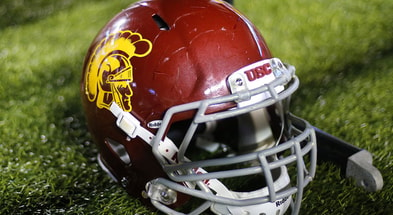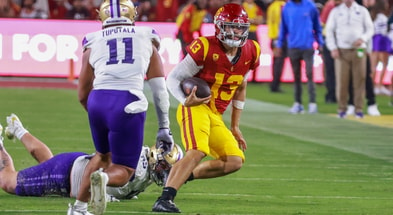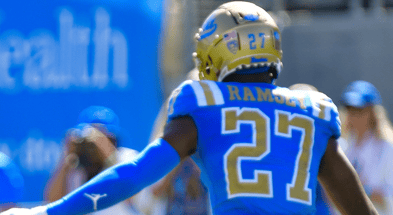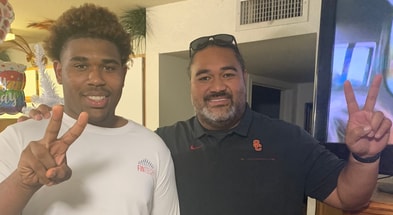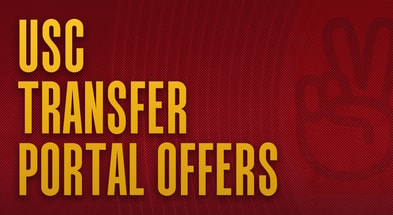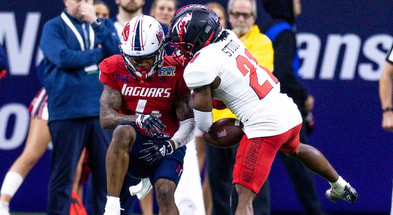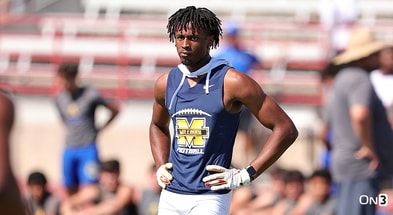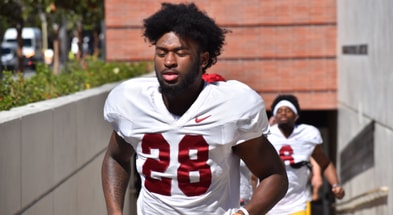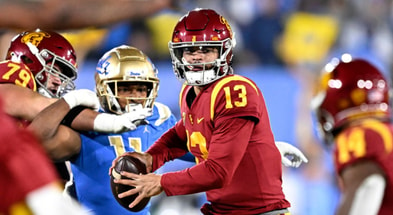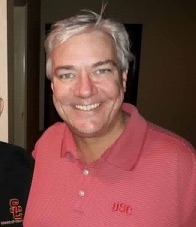Musings from Arledge: USC Receivers, Tackling, and It All Comes Down to Saturday
In the immortal words of Dennis Green, these Trojans are who we thought they were. USC against Colorado was what USC has been all season: a team that doesn’t quit, doesn’t tackle, and doesn’t play four quarters of football. But one that has enough talent on the field, particularly at wide receiver, to sometimes pull out a win.
How you feel about this game depends on your mindset coming in. USC road wins have become so scarce, you might be willing to overlook how the sausage was made and gladly see any road win as a good road win. And I won’t try to talk you out of that.
But, let’s be honest, Colorado is a terrible football team, and for much of the game, USC looked like a Paul Hackett or Ted Tollner football team. Colorado was on a three-game losing streak after having lost to Arizona at home (!) and having been demolished by Oregon and Washington State by a combined score of 86-13. Colorado had under 300 total yards against Oregon and only 320 against Wazzu. That’s not good offense. Colorado has given up at least 30 points in 13 straight games. That’s not good defense. In sum, Colorado is a bad, bad football team.
So if we take the Clay Helton principle – if you’re playing a top-10* Notre Dame team in South Bend and take them to the wire, you must be playing some pretty good ball – and apply its corollary – if you’re playing a terrible Colorado team and you get down two scores and are very fortunate to win late in the fourth, you’re probably not playing great football – you have reason to feel uncomfortable with this one.
And USC was very fortunate to win. Not only did USC find itself down two scores to Colorado, but it flirted with two turnovers — one on the desperate toss to Christon that was almost picked off, and one on Slovis’s fumble — that would have doomed the comeback and led to a horrific, inexcusable loss. The Trojans once again failed to cause a single turnover (currently 119th in the country in turnover margin). The defense gave up 520 ugly yards. It took two excellent late drives for the offense to score only 35 points; I say only because Colorado averages giving up 35 against a mediocre schedule. And if not for Colorado’s generosity in the penalty department — bad teams tend to be generous to their opponents — USC would be in full free-fall mode right now.
So what do we take from this? USC is still a bad football team on the road, and every game left on the schedule will be either a major challenge (Oregon) or a dogfight (ASU, Cal, and UCLA). The Trojans kept their slim Rose Bowl hopes alive, but the buzzards were circling Saturday, and for much of the night, that Rose Bowl dream had a barely detectable pulse.
* Hmmm, maybe not.
But boy can those Trojans receivers play. Michael Pittman is a man out there. We all know that. But the other two starters are no slouches. Vaughns’ touchdown was a thing of beauty: a fantastic back-shoulder throw by Slovis and exceptional body control from the always graceful Tyler Vaughns. And Amon-Ra shows that he can do it all, including play running back at this level if required. I don’t know where this group ranks in terms of recent USC receiving corps. We’ve had a bunch of good ones over the last two decades. Individually none of these guys is at the top of the list. Pittman is still below Mike Williams in terms of big receiver dominance, none of these guys has the explosiveness of Marqise Lee, and nobody can touch Keyshawn. But as a group ... I just don’t know if any of the other USC teams had three guys at this level. It’s a fun group to watch.
I don’t want to talk about USC’s tackling anymore. It will be embarrassing almost every week, and Clay Helton is apparently satisfied with it, or at least satisfied enough that he’ll go with the status quo. Well … it’s his career.
These roughing the passer penalties are becoming a problem. I thought the call at ND against EA was horrible. You can’t expect a guy to hold up when he’s that close to the QB, and if you don’t lead with your helmet or hit the QB in the head or neck, you shouldn’t get penalized on a play like that.
But the call against EA wasn’t nearly as awful as the call on the Colorado defender. That guy hit Slovis almost at the exact time he was releasing the ball, he hit with his shoulder pad, and he hit Slovis in the middle of his body. That was a ridiculous call.
I do understand the need to protect quarterbacks. In fact, it would help is USC would protect its quarterback a little. For a team that is 100th in the nation in sacks, Colorado was sure hitting Slovis a lot. And a big part of it is Slovis’ own fault. I don’t know what the hot reads are in this system, but I know that Slovis is taking a lot of hits from blitzers — untouched blitzers, usually — that probably should result in some hot reads. And the kid absolutely, positively needs to stop taking on tacklers near the goal line. He’s going to get himself killed, or at least concussed for the third time. And USC really can’t afford to lose him.
I still like the young secondary. Laviska Shenault is going to make a lot of people look bad, but I think the Trojans did a better job as the game wore on. I do wonder why Clancy Pendergast insisted on so many man-to-man coverages against Shenault without any apparent safety help. You’re begging to give up big plays when you play him like that.
The biggest of those plays, of course, was Shenault’s 71-yard TD reception at the start of the third quarter. I question Clancy Pendergast’s plan on that play.
Colorado lined up with four wideouts, two to each side, and a single back. By alignment, shows man coverage with a single deep safety to help over the top and Greg Johnson in coverage on the inside receiver. (You can’t see Shenault; he’s off the screen at the bottom.)
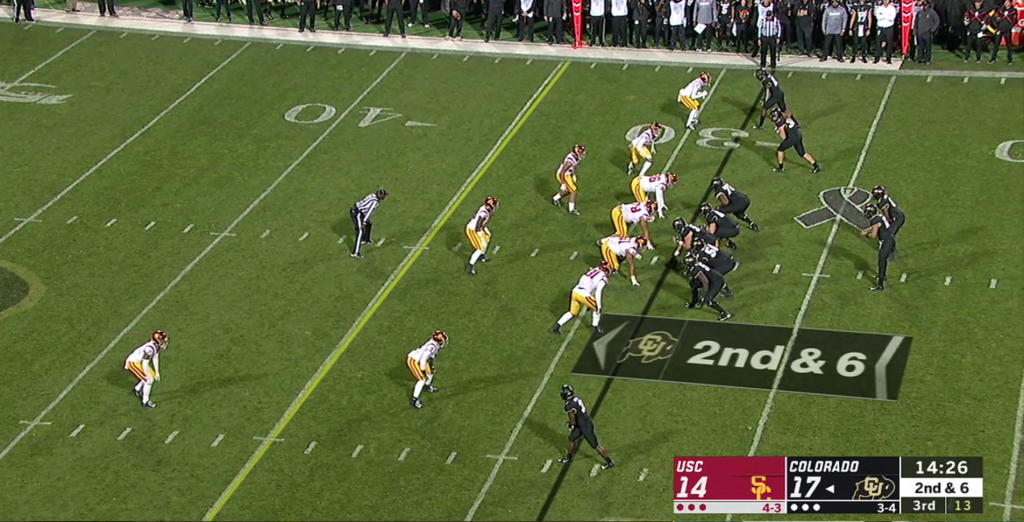
But just before the snap, Johnson starts to creep up and in, showing blitz. That means the free safety has the slot receiver on the left, and USC is in man coverage with no help. Note that Chase Williams and Isaac Taylor-Stuart are in soft man coverage. Taylor-Stuart is giving Shenault about a 10-yard cushion.
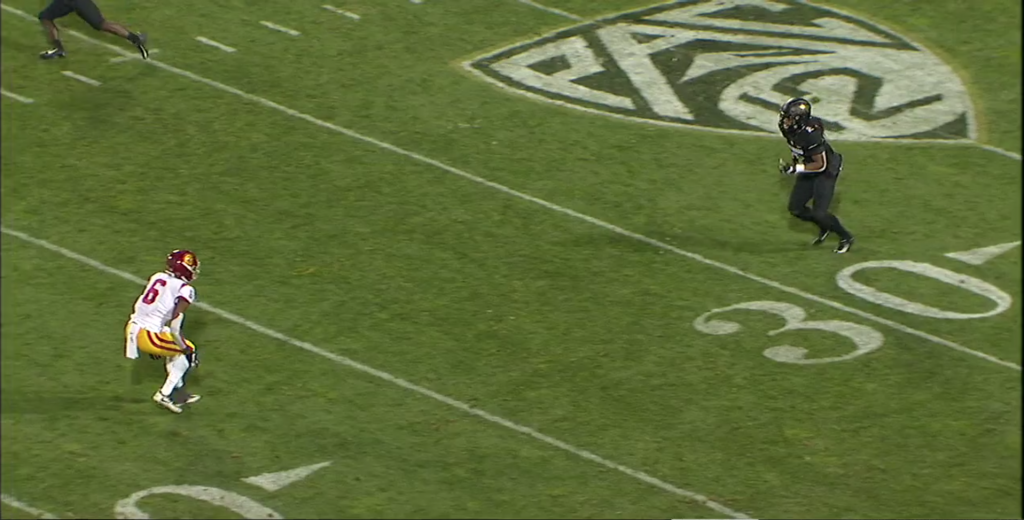
The Trojans bring six on the play. You might think that if Taylor-Stuart has Shenault in man coverage with no safety help that this large cushion is his friend; it might help him avoid getting beat deep by a premier wideout. And that’s true. But there is a downside, too. USC is bringing six, and with no help for the secondary, they need to get to the QB quickly. But Steven Montez can see that USC is bringing six, and he knows he needs to get rid of the ball quickly. By playing so far off Shenault, USC gives Montez an easy quick throw, virtually guaranteeing that the blitz won’t succeed. Ask yourself this question: if Shenault has a 10-yard cushion and there is nobody to help inside, what is the likelihood that anybody will stop Montez from hitting him on the quick slant? The cushion gives Montez an easy throw. Had USC been in tight man coverage, Taylor-Stuart might have been in a position to challenge the play. The other problem with the cushion is that the farther Taylor-Stuart plays off of Shenault, the more ground he needs to cover to tackle him, and the more room Shenault has to make a move and avoid the tackle. And, remember, there is nobody to help Taylor-Stuart if he misses.
And that, of course, is exactly what happens.
I don’t have a problem with Taylor-Stuart’s break on the ball. The reality is that in the early stages of that slant, you have to be wary of the sluggo (slant and go) route, and it’s dangerous — especially with no safety help — to come flying up too fast. With the cushion he has, he can’t stop that slant and still worry about getting beaten over the top.
Taylor-Stuart breaks at Shenault at a good angle, prepared to cut him off shortly after he makes the catch to make the problem. Taylor-Stuart’s problem is that just before he arrives at that mesh point, he takes a sideways step with his right foot, hesitating almost as if he expects Shenault to stop and break toward the sideline. It’s not clear why Taylor-Stuart feared that, because Shenault never slowed down, shuffled his feet, or did anything else I could see to betray an intention of doing so. Taylor-Stuart should have run through his man. It would have been a short gain. His short hesitation step was enough to allow Shenault to cut upfield and take it for six.
So Taylor-Stuart’s technique failed him, but I think Clancy Pendergast put him in a very difficult position, and Taylor-Stuart’s error is exactly the type of error you’d expect when you bring six and put your corner in soft man coverage against one of the best big-play guys in the conference.
So it all comes down to Saturday. USC’s last chance to have a successful season hinges on an upset of the Ducks. I’ve expressed my feelings about Oregon plenty in this column. If any team deserves a humiliating and devastating loss, it’s the Oregon Ducks. But that is not going to be easy. Despite the close game against Wazzu, Oregon is probably the best team on the schedule this year. I think the Ducks are better than the Irish at QB and on the offensive line, and that means USC’s defense will have to play better than they’ve played all year if the Trojans are going to have a shot. The defensive line cannot get pushed around like they did in South Bend. The offense can’t take the first half off. We probably need to win the turnover battle, and a big special teams play wouldn’t hurt. I think it’s a tall order, Nordberg, but that’s why they play the games. If the Trojans win this one, they’re not out of the woods (two road games and an improving UCLA team will still be a challenge), but they have a legitimate shot at winning the division. If they lose, nothing they do in the remaining three games can salvage the season. Lose Saturday, and the season is a waste.
Carthago delenda est.
